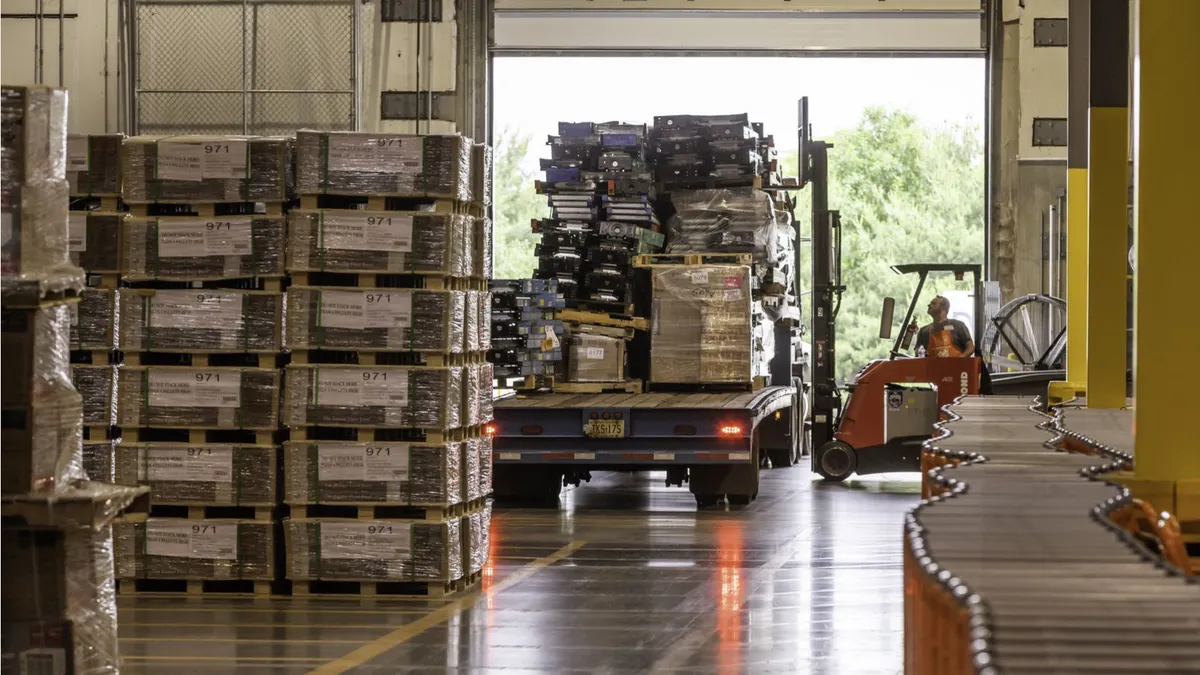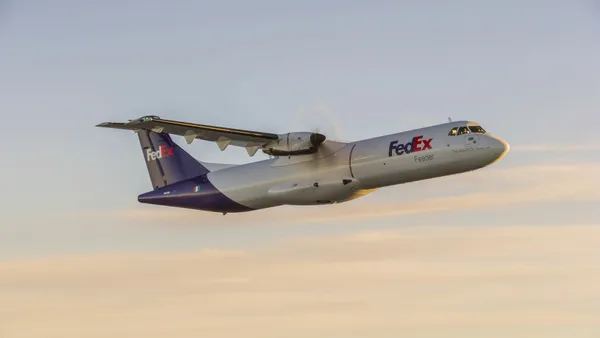Dive Brief:
- Total U.S. business logistics costs were $1.557 trillion in 2020, a 4% decrease from the previous year, according to an analysis from Kearney in the Council of Supply Chain Management Professionals' Annual State of Logistics Report.
- Transport costs rose slightly by 0.8% to $1.059 trillion when all modes were considered, but a 15% decrease in the cost of carrying inventory last year led to a drop in the total index.
- "There was simply less inventory generating cost in the system," said Michael Zimmerman, a partner at Kearney, during a briefing on the report's results. "The financial costs of inventories fell and interests rate were lower, and the inventory sales ratio hit 20-year lows in May of 2020 and kept falling."
U.S. business logistics costs had been on the rise until 2020
Dive Insight:
"Most logisticians will be surprised by this drop, expecting a rise," Zimmerman said.
But drops in shipping volumes and prices in the first half of 2020, and lower overall inventories had a "big impact," according to Zimmerman. Transport costs, in particular, saw big swings in rates throughout the year, with the cost of some modes rising and others falling.
Changes in U.S. business logistics costs varied by transport mode
"Upheaval of supply chains created chaos that placed gigantic demands on logistics, resulting in higher prices for logistics services despite the shrinking economy," said Zimmerman.
In the parcel sector, for example, the pandemic accelerated demand for last-mile delivery. In fact, demand has grown so much in the past years, parcel carriers like FedEx, UPS and USPS have altered their pricing mechanisms or business offerings to adapt. FedEx and UPS piled on surcharges for demand spikes, and USPS is considering sending more of its packages by truck or rail, instead of airfreight, given the costs.
Halfway into the year, companies have continually reported an unsustainable surge in transport costs amid these disruptions. Peloton said in February it expected to incur 10 times its usual freight costs as it had to ship products by airfreight, while companies like Dollar Tree and General Mills said high costs are eating away at margins.
"The world and container ocean freight is just upside down right now, but it will not last forever," Dollar Tree CEO Mike Witynski said in May.
For now, supply chains continue to be disrupted halfway through 2021, creating an unpredictable cost environment for logistics managers. Mispositioned containers, congestion at ports (and related fees), shifting air cargo routes and labor shortages are among the factors contributing to an elevated transport cost environment and inventory shortages.
"Logistics, like the economy as a whole, is in the midst of another wild ride in 2021," Zimmerman said.














